Job Winning Resume
Create a resume that stands out with our expert guide. Learn the best practices, tips, and tricks to create a resume that impresses employers and increases your chances of landing your dream job.
1000+ Reviews on Trustpilot
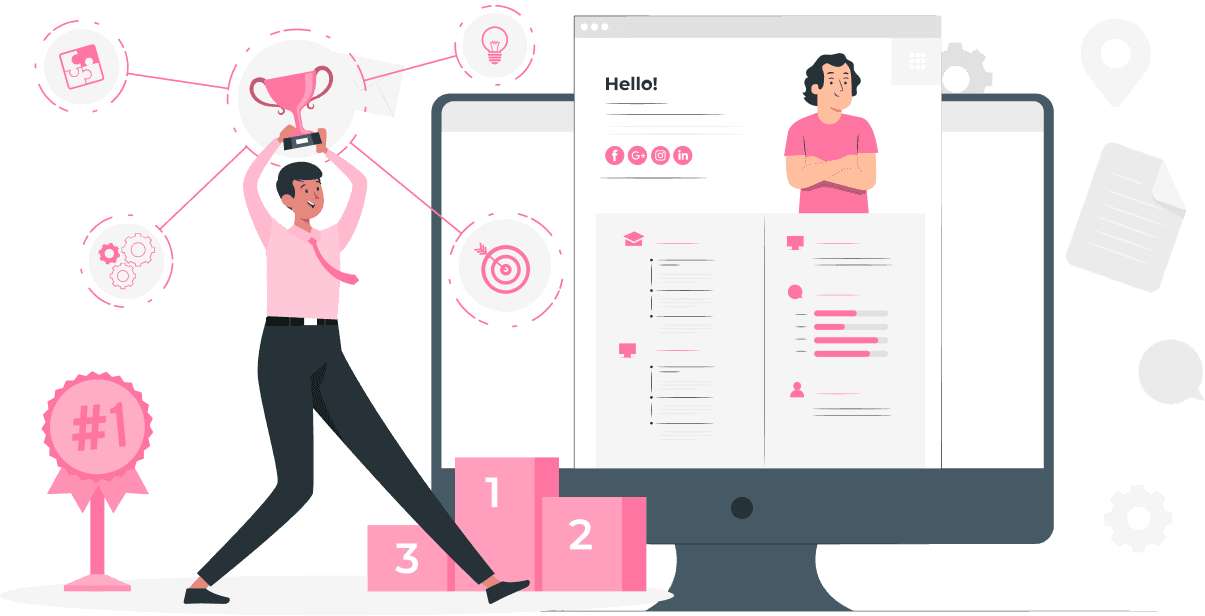
Job Winning Resume
Create a resume that stands out with our expert guide. Learn the best practices, tips, and tricks to create a resume that impresses employers and increases your chances of landing your dream job.
1000+ Reviews on Trustpilot

Job Winning Resume
Create a resume that stands out with our expert guide. Learn the best practices, tips, and tricks to create a resume that impresses employers and increases your chances of landing your dream job.
1000+ Reviews on Trustpilot


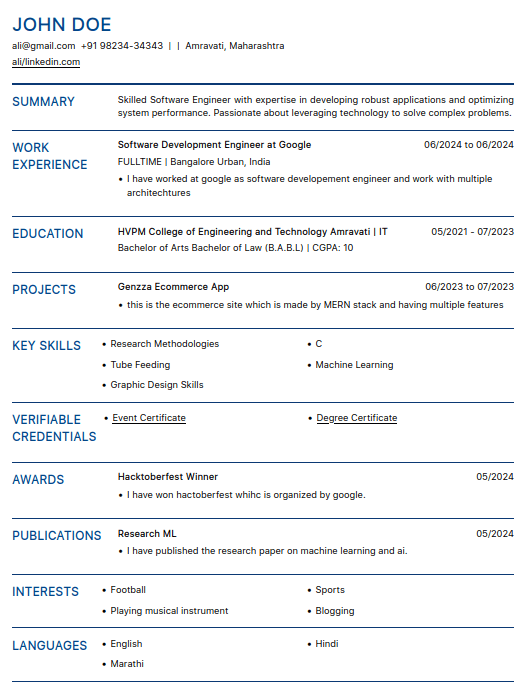
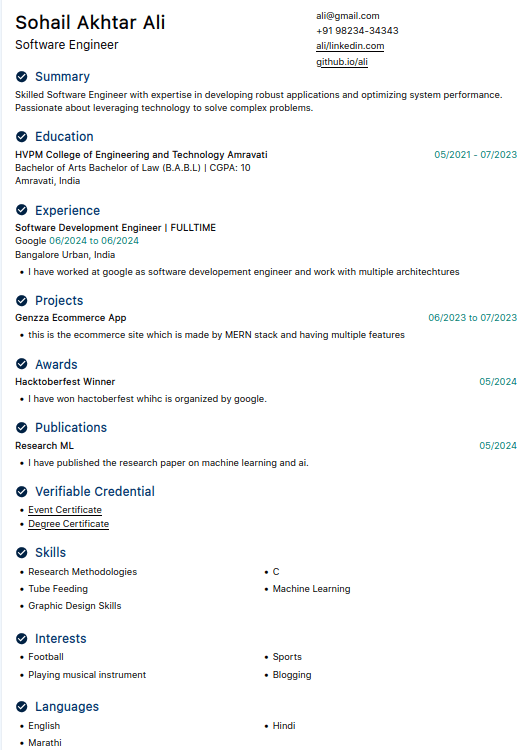
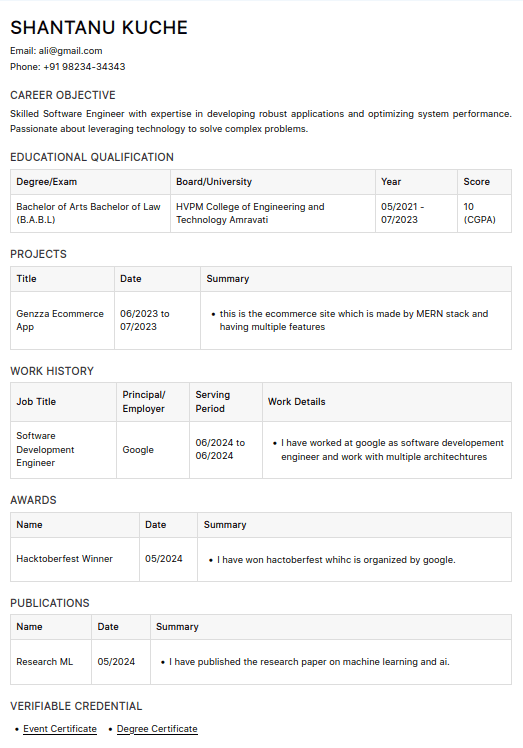
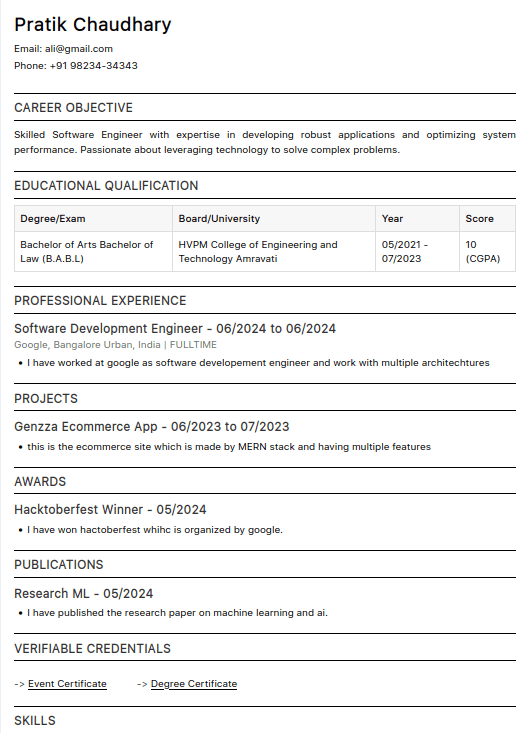
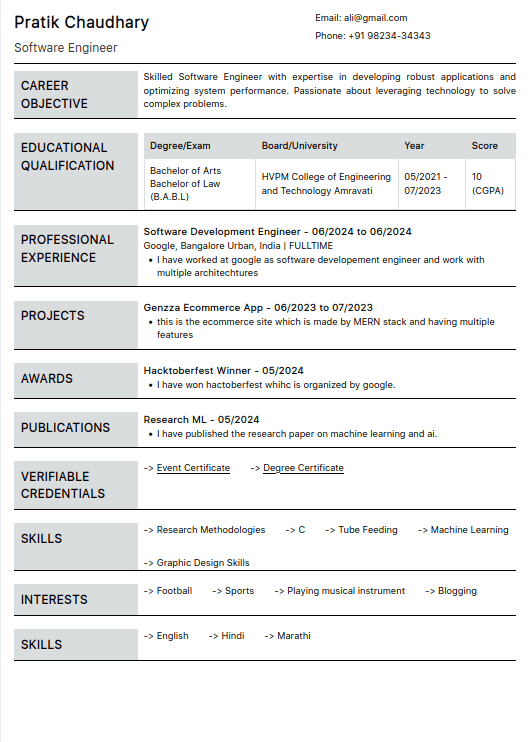












Your resume is often the first point of contact between you and a potential employer. It’s your opportunity to showcase your skills, experience, and qualifications in a way that convinces hiring managers you’re the best fit for the job.
But crafting a resume that stands out in a competitive job market requires more than just listing your work history. In this comprehensive guide, we’ll walk you through the steps to create a winning resume that captures attention and boosts your chances of landing an interview.
Your resume is often the first point of contact between you and a potential employer. It’s your opportunity to showcase your skills, experience, and qualifications in a way that convinces hiring managers you’re the best fit for the job.
But crafting a resume that stands out in a competitive job market requires more than just listing your work history. In this comprehensive guide, we’ll walk you through the steps to create a winning resume that captures attention and boosts your chances of landing an interview.
Your resume is often the first point of contact between you and a potential employer. It’s your opportunity to showcase your skills, experience, and qualifications in a way that convinces hiring managers you’re the best fit for the job.
But crafting a resume that stands out in a competitive job market requires more than just listing your work history. In this comprehensive guide, we’ll walk you through the steps to create a winning resume that captures attention and boosts your chances of landing an interview.
1. Understanding the Purpose of a Resume
A resume is a document that provides a concise summary of your professional history, education, skills, and achievements. The primary purpose of a resume is to secure an interview by presenting your qualifications in the best possible light. It should be tailored to the specific job you’re applying for, highlighting the experiences and skills most relevant to the position.
1. Understanding the Purpose of a Resume
A resume is a document that provides a concise summary of your professional history, education, skills, and achievements. The primary purpose of a resume is to secure an interview by presenting your qualifications in the best possible light. It should be tailored to the specific job you’re applying for, highlighting the experiences and skills most relevant to the position.
1. Understanding the Purpose of a Resume
A resume is a document that provides a concise summary of your professional history, education, skills, and achievements. The primary purpose of a resume is to secure an interview by presenting your qualifications in the best possible light. It should be tailored to the specific job you’re applying for, highlighting the experiences and skills most relevant to the position.
2. Choosing the Right Resume Format
There are several resume formats to choose from, and selecting the right one depends on your career history, industry, and the job you’re targeting. The three most common formats are:
Chronological Resume: Lists your work experience in reverse chronological order, starting with your most recent job. This format is ideal for those with a steady work history in a specific field.
Functional Resume: Focuses on skills and experience rather than chronological work history. It’s best suited for those with gaps in employment, career changers, or individuals with a diverse job history.
Combination (Hybrid) Resume: Merges elements of both chronological and functional formats. It’s perfect for professionals with a strong skill set and relevant experience who also want to highlight their career progression.
Tips:
Choose a format that best showcases your strengths.
Ensure your resume is easy to read, with clear headings and a logical flow.
2. Choosing the Right Resume Format
There are several resume formats to choose from, and selecting the right one depends on your career history, industry, and the job you’re targeting. The three most common formats are:
Chronological Resume: Lists your work experience in reverse chronological order, starting with your most recent job. This format is ideal for those with a steady work history in a specific field.
Functional Resume: Focuses on skills and experience rather than chronological work history. It’s best suited for those with gaps in employment, career changers, or individuals with a diverse job history.
Combination (Hybrid) Resume: Merges elements of both chronological and functional formats. It’s perfect for professionals with a strong skill set and relevant experience who also want to highlight their career progression.
Tips:
Choose a format that best showcases your strengths.
Ensure your resume is easy to read, with clear headings and a logical flow.
2. Choosing the Right Resume Format
There are several resume formats to choose from, and selecting the right one depends on your career history, industry, and the job you’re targeting. The three most common formats are:
Chronological Resume: Lists your work experience in reverse chronological order, starting with your most recent job. This format is ideal for those with a steady work history in a specific field.
Functional Resume: Focuses on skills and experience rather than chronological work history. It’s best suited for those with gaps in employment, career changers, or individuals with a diverse job history.
Combination (Hybrid) Resume: Merges elements of both chronological and functional formats. It’s perfect for professionals with a strong skill set and relevant experience who also want to highlight their career progression.
Tips:
Choose a format that best showcases your strengths.
Ensure your resume is easy to read, with clear headings and a logical flow.
3. Structuring Your Resume
A well-structured resume is key to making a positive impression. Here’s a breakdown of the essential sections every resume should include:
Contact Information: Include your full name, phone number, email address, and LinkedIn profile (optional). Make sure your email address is professional.
Professional Summary or Objective: A brief statement at the top of your resume that summarizes your career goals and key qualifications. Tailor this section to the job you’re applying for.
Work Experience: List your relevant work experience in reverse chronological order. For each position, include the job title, company name, location, and dates of employment. Use bullet points to describe your responsibilities and achievements, focusing on results and quantifiable accomplishments.
Education: Include your highest degree first, followed by any other relevant education. Mention the institution’s name, degree obtained, and graduation date.
Skills: Highlight the skills that are most relevant to the job. This can include technical skills, soft skills, and language proficiency.
Certifications and Training: List any relevant certifications, licenses, or professional development courses.
Volunteer Experience (Optional): Include volunteer work that is relevant to the job or demonstrates valuable skills.
Tips:
Use action verbs to describe your responsibilities and achievements (e.g., “managed,” “developed,” “implemented”).
Quantify your accomplishments with numbers whenever possible (e.g., “Increased sales by 20%”).
Keep your resume to one page if you have less than 10 years of experience; two pages are acceptable for more experienced professionals.
3. Structuring Your Resume
A well-structured resume is key to making a positive impression. Here’s a breakdown of the essential sections every resume should include:
Contact Information: Include your full name, phone number, email address, and LinkedIn profile (optional). Make sure your email address is professional.
Professional Summary or Objective: A brief statement at the top of your resume that summarizes your career goals and key qualifications. Tailor this section to the job you’re applying for.
Work Experience: List your relevant work experience in reverse chronological order. For each position, include the job title, company name, location, and dates of employment. Use bullet points to describe your responsibilities and achievements, focusing on results and quantifiable accomplishments.
Education: Include your highest degree first, followed by any other relevant education. Mention the institution’s name, degree obtained, and graduation date.
Skills: Highlight the skills that are most relevant to the job. This can include technical skills, soft skills, and language proficiency.
Certifications and Training: List any relevant certifications, licenses, or professional development courses.
Volunteer Experience (Optional): Include volunteer work that is relevant to the job or demonstrates valuable skills.
Tips:
Use action verbs to describe your responsibilities and achievements (e.g., “managed,” “developed,” “implemented”).
Quantify your accomplishments with numbers whenever possible (e.g., “Increased sales by 20%”).
Keep your resume to one page if you have less than 10 years of experience; two pages are acceptable for more experienced professionals.
3. Structuring Your Resume
A well-structured resume is key to making a positive impression. Here’s a breakdown of the essential sections every resume should include:
Contact Information: Include your full name, phone number, email address, and LinkedIn profile (optional). Make sure your email address is professional.
Professional Summary or Objective: A brief statement at the top of your resume that summarizes your career goals and key qualifications. Tailor this section to the job you’re applying for.
Work Experience: List your relevant work experience in reverse chronological order. For each position, include the job title, company name, location, and dates of employment. Use bullet points to describe your responsibilities and achievements, focusing on results and quantifiable accomplishments.
Education: Include your highest degree first, followed by any other relevant education. Mention the institution’s name, degree obtained, and graduation date.
Skills: Highlight the skills that are most relevant to the job. This can include technical skills, soft skills, and language proficiency.
Certifications and Training: List any relevant certifications, licenses, or professional development courses.
Volunteer Experience (Optional): Include volunteer work that is relevant to the job or demonstrates valuable skills.
Tips:
Use action verbs to describe your responsibilities and achievements (e.g., “managed,” “developed,” “implemented”).
Quantify your accomplishments with numbers whenever possible (e.g., “Increased sales by 20%”).
Keep your resume to one page if you have less than 10 years of experience; two pages are acceptable for more experienced professionals.
4. Tailoring Your Resume to the Job
One of the most important steps in creating a winning resume is customizing it for each job application. Employers look for candidates who match the job description, so it’s essential to align your resume with the specific requirements of the position.
Steps to Tailor Your Resume:
Analyze the Job Description: Highlight keywords and phrases in the job listing that describe the skills and qualifications the employer is seeking.
Match Your Skills: Ensure that the skills section of your resume includes these keywords and that your work experience reflects the responsibilities mentioned in the job description.
Adjust Your Professional Summary: Modify your summary or objective to emphasize the experiences and qualifications that align with the job.
Tips:
Avoid using a generic resume for all applications. Tailoring your resume demonstrates that you’ve put thought into your application.
Use the same terminology as the job description to increase the chances of passing through Applicant Tracking Systems (ATS).
4. Tailoring Your Resume to the Job
One of the most important steps in creating a winning resume is customizing it for each job application. Employers look for candidates who match the job description, so it’s essential to align your resume with the specific requirements of the position.
Steps to Tailor Your Resume:
Analyze the Job Description: Highlight keywords and phrases in the job listing that describe the skills and qualifications the employer is seeking.
Match Your Skills: Ensure that the skills section of your resume includes these keywords and that your work experience reflects the responsibilities mentioned in the job description.
Adjust Your Professional Summary: Modify your summary or objective to emphasize the experiences and qualifications that align with the job.
Tips:
Avoid using a generic resume for all applications. Tailoring your resume demonstrates that you’ve put thought into your application.
Use the same terminology as the job description to increase the chances of passing through Applicant Tracking Systems (ATS).
4. Tailoring Your Resume to the Job
One of the most important steps in creating a winning resume is customizing it for each job application. Employers look for candidates who match the job description, so it’s essential to align your resume with the specific requirements of the position.
Steps to Tailor Your Resume:
Analyze the Job Description: Highlight keywords and phrases in the job listing that describe the skills and qualifications the employer is seeking.
Match Your Skills: Ensure that the skills section of your resume includes these keywords and that your work experience reflects the responsibilities mentioned in the job description.
Adjust Your Professional Summary: Modify your summary or objective to emphasize the experiences and qualifications that align with the job.
Tips:
Avoid using a generic resume for all applications. Tailoring your resume demonstrates that you’ve put thought into your application.
Use the same terminology as the job description to increase the chances of passing through Applicant Tracking Systems (ATS).
5. Resume Design and Formatting Tips
The design and formatting of your resume play a crucial role in its readability. A well-designed resume not only looks professional but also makes it easy for hiring managers to find the information they need.
Key Design Elements:
Font: Use a clean, professional font such as Arial, Calibri, or Times New Roman. Keep the font size between 10 and 12 points.
Margins: Use one-inch margins on all sides to ensure your resume is not overcrowded.
Headings: Use bold or larger fonts for section headings to make them stand out.
Bullet Points: Use bullet points to break up text and make your resume easier to skim.
White Space: Ensure there’s enough white space to avoid a cluttered look. This makes your resume more inviting to read.
Tips:
Avoid using overly complex designs, colors, or graphics unless you’re applying for a creative role.
Save your resume as a PDF to preserve the formatting across different devices.
5. Resume Design and Formatting Tips
The design and formatting of your resume play a crucial role in its readability. A well-designed resume not only looks professional but also makes it easy for hiring managers to find the information they need.
Key Design Elements:
Font: Use a clean, professional font such as Arial, Calibri, or Times New Roman. Keep the font size between 10 and 12 points.
Margins: Use one-inch margins on all sides to ensure your resume is not overcrowded.
Headings: Use bold or larger fonts for section headings to make them stand out.
Bullet Points: Use bullet points to break up text and make your resume easier to skim.
White Space: Ensure there’s enough white space to avoid a cluttered look. This makes your resume more inviting to read.
Tips:
Avoid using overly complex designs, colors, or graphics unless you’re applying for a creative role.
Save your resume as a PDF to preserve the formatting across different devices.
5. Resume Design and Formatting Tips
The design and formatting of your resume play a crucial role in its readability. A well-designed resume not only looks professional but also makes it easy for hiring managers to find the information they need.
Key Design Elements:
Font: Use a clean, professional font such as Arial, Calibri, or Times New Roman. Keep the font size between 10 and 12 points.
Margins: Use one-inch margins on all sides to ensure your resume is not overcrowded.
Headings: Use bold or larger fonts for section headings to make them stand out.
Bullet Points: Use bullet points to break up text and make your resume easier to skim.
White Space: Ensure there’s enough white space to avoid a cluttered look. This makes your resume more inviting to read.
Tips:
Avoid using overly complex designs, colors, or graphics unless you’re applying for a creative role.
Save your resume as a PDF to preserve the formatting across different devices.
6. Common Resume Mistakes to Avoid
Even a strong resume can be undermined by common mistakes. Here are some pitfalls to watch out for:
Spelling and Grammar Errors: Proofread your resume multiple times and consider having someone else review it.
Including Irrelevant Information: Focus on experiences and skills that are directly relevant to the job you’re applying for.
Using Clichés: Avoid overused phrases like “hard-working” or “team player.” Instead, demonstrate these qualities through your achievements.
Lying or Exaggerating: Always be truthful on your resume. Misrepresenting your qualifications can lead to serious consequences.
Tips:
Customize each resume for the job application.
Stay concise and relevant; avoid adding unnecessary details or information.
A well-crafted resume is your ticket to securing an interview and ultimately landing the job you want. By choosing the right format, structuring your content effectively, and tailoring your resume to each job, you can create a document that impresses employers and sets you apart from other candidates.
Remember, your resume is a reflection of your professional self, so take the time to ensure it’s polished, accurate, and aligned with the job you’re applying for. With the right approach, your resume can become a powerful tool in your job search, opening doors to new career opportunities.
6. Common Resume Mistakes to Avoid
Even a strong resume can be undermined by common mistakes. Here are some pitfalls to watch out for:
Spelling and Grammar Errors: Proofread your resume multiple times and consider having someone else review it.
Including Irrelevant Information: Focus on experiences and skills that are directly relevant to the job you’re applying for.
Using Clichés: Avoid overused phrases like “hard-working” or “team player.” Instead, demonstrate these qualities through your achievements.
Lying or Exaggerating: Always be truthful on your resume. Misrepresenting your qualifications can lead to serious consequences.
Tips:
Customize each resume for the job application.
Stay concise and relevant; avoid adding unnecessary details or information.
A well-crafted resume is your ticket to securing an interview and ultimately landing the job you want. By choosing the right format, structuring your content effectively, and tailoring your resume to each job, you can create a document that impresses employers and sets you apart from other candidates.
Remember, your resume is a reflection of your professional self, so take the time to ensure it’s polished, accurate, and aligned with the job you’re applying for. With the right approach, your resume can become a powerful tool in your job search, opening doors to new career opportunities.
6. Common Resume Mistakes to Avoid
Even a strong resume can be undermined by common mistakes. Here are some pitfalls to watch out for:
Spelling and Grammar Errors: Proofread your resume multiple times and consider having someone else review it.
Including Irrelevant Information: Focus on experiences and skills that are directly relevant to the job you’re applying for.
Using Clichés: Avoid overused phrases like “hard-working” or “team player.” Instead, demonstrate these qualities through your achievements.
Lying or Exaggerating: Always be truthful on your resume. Misrepresenting your qualifications can lead to serious consequences.
Tips:
Customize each resume for the job application.
Stay concise and relevant; avoid adding unnecessary details or information.
A well-crafted resume is your ticket to securing an interview and ultimately landing the job you want. By choosing the right format, structuring your content effectively, and tailoring your resume to each job, you can create a document that impresses employers and sets you apart from other candidates.
Remember, your resume is a reflection of your professional self, so take the time to ensure it’s polished, accurate, and aligned with the job you’re applying for. With the right approach, your resume can become a powerful tool in your job search, opening doors to new career opportunities.
Cover Letter Builder FAQ
Cover Letter Builder FAQ
Cover Letter Builder FAQ
What is a Resume?
A resume is a formal document that provides an overview of your professional qualifications, including your work experience, education, skills, and achievements. It's typically used to apply for jobs, giving potential employers a snapshot of your background and suitability for a specific role. A well-crafted resume highlights your strengths and is often your first opportunity to make a strong impression.
What is a Resume?
A resume is a formal document that provides an overview of your professional qualifications, including your work experience, education, skills, and achievements. It's typically used to apply for jobs, giving potential employers a snapshot of your background and suitability for a specific role. A well-crafted resume highlights your strengths and is often your first opportunity to make a strong impression.
What is a Resume?
A resume is a formal document that provides an overview of your professional qualifications, including your work experience, education, skills, and achievements. It's typically used to apply for jobs, giving potential employers a snapshot of your background and suitability for a specific role. A well-crafted resume highlights your strengths and is often your first opportunity to make a strong impression.
How do i create my first resume?
A resume is a formal document that provides an overview of your professional qualifications, including your work experience, education, skills, and achievements. It's typically used to apply for jobs, giving potential employers a snapshot of your background and suitability for a specific role. A well-crafted resume highlights your strengths and is often your first opportunity to make a strong impression.
How do i create my first resume?
A resume is a formal document that provides an overview of your professional qualifications, including your work experience, education, skills, and achievements. It's typically used to apply for jobs, giving potential employers a snapshot of your background and suitability for a specific role. A well-crafted resume highlights your strengths and is often your first opportunity to make a strong impression.
How do i create my first resume?
A resume is a formal document that provides an overview of your professional qualifications, including your work experience, education, skills, and achievements. It's typically used to apply for jobs, giving potential employers a snapshot of your background and suitability for a specific role. A well-crafted resume highlights your strengths and is often your first opportunity to make a strong impression.
What should I include in my resume?
Your resume should include your contact information, a professional summary or objective, work experience, education, skills, and any relevant certifications or accomplishments. Tailoring your resume to the job you're applying for can increase your chances of standing out. 2. How long should my resume be?
What should I include in my resume?
Your resume should include your contact information, a professional summary or objective, work experience, education, skills, and any relevant certifications or accomplishments. Tailoring your resume to the job you're applying for can increase your chances of standing out. 2. How long should my resume be?
What should I include in my resume?
Your resume should include your contact information, a professional summary or objective, work experience, education, skills, and any relevant certifications or accomplishments. Tailoring your resume to the job you're applying for can increase your chances of standing out. 2. How long should my resume be?
Should I include a photo on my resume?
The answer is No. Including a photo on your resume is not recommended as it can distract the recruiter HR managers. Most of the companies use Applicant tracking system (ATS) to check the Resume. Graphics should possibly not be scanned by the ATS System. So, do not add any type of images in your resume.
Should I include a photo on my resume?
The answer is No. Including a photo on your resume is not recommended as it can distract the recruiter HR managers. Most of the companies use Applicant tracking system (ATS) to check the Resume. Graphics should possibly not be scanned by the ATS System. So, do not add any type of images in your resume.
Should I include a photo on my resume?
The answer is No. Including a photo on your resume is not recommended as it can distract the recruiter HR managers. Most of the companies use Applicant tracking system (ATS) to check the Resume. Graphics should possibly not be scanned by the ATS System. So, do not add any type of images in your resume.
What's the difference between a resume and a CV?
A resume is a informational document, typically one to two pages, that highlights your relevant work experience, skills, and education. A CV (Curriculum Vitae) is more detailed, often used for academic, research, or international positions, and includes a comprehensive overview of your professional history, publications, and other accomplishments.
What's the difference between a resume and a CV?
A resume is a informational document, typically one to two pages, that highlights your relevant work experience, skills, and education. A CV (Curriculum Vitae) is more detailed, often used for academic, research, or international positions, and includes a comprehensive overview of your professional history, publications, and other accomplishments.
What's the difference between a resume and a CV?
A resume is a informational document, typically one to two pages, that highlights your relevant work experience, skills, and education. A CV (Curriculum Vitae) is more detailed, often used for academic, research, or international positions, and includes a comprehensive overview of your professional history, publications, and other accomplishments.
How often should I update my resume?
You should update your resume regularly, especially after gaining new experience, skills, or certifications. It's a good practice to revisit and revise your resume every six months or whenever you're preparing to apply for a new job.
How often should I update my resume?
You should update your resume regularly, especially after gaining new experience, skills, or certifications. It's a good practice to revisit and revise your resume every six months or whenever you're preparing to apply for a new job.
How often should I update my resume?
You should update your resume regularly, especially after gaining new experience, skills, or certifications. It's a good practice to revisit and revise your resume every six months or whenever you're preparing to apply for a new job.
Build Your Resume
Truresume offers free Resume Templates to help you craft a professional resume quickly and easily.
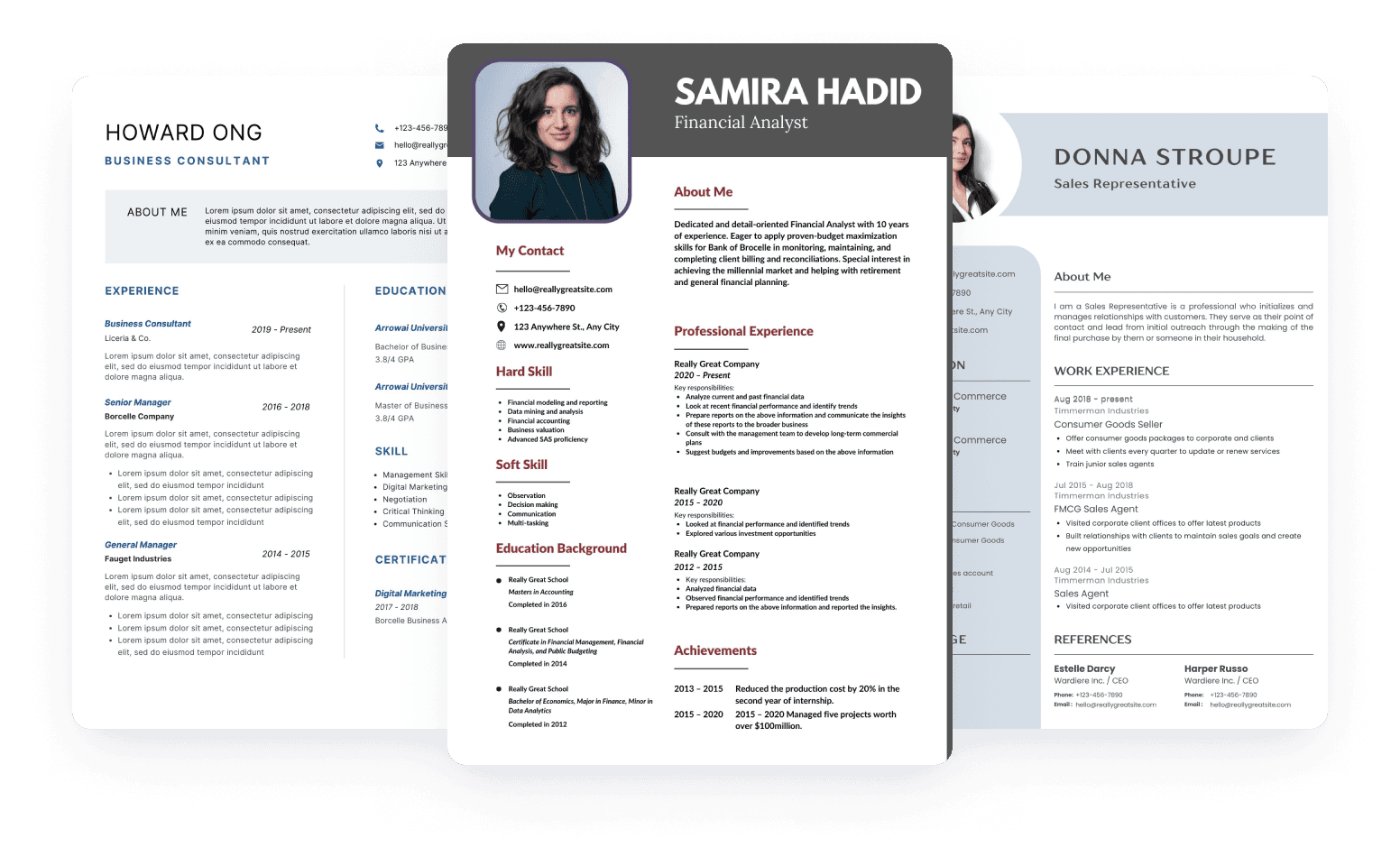
Build Your Resume
Truresume offers free Resume Templates to help you craft a professional resume quickly and easily.

Build Your Resume
Truresume offers free Resume Templates to help you craft a professional resume quickly and easily.

Our Featured Articles

resume
Best Resume Format for Freshers in 2025: Your Ultimate Guide to Getting Noticed
3 Jun 2025

ATS
Why TruResume ATS Friendly Resume Builder Tools Are Best for Resume Building
3 Jun 2025

Resume
Why ATS-Friendly Resumes Are Important to Pass Initial Screening
3 Jun 2025

Resume
What’s the Difference Between CV and Resume?
3 Jun 2025

Resume
How to Write a Resume for Freshers with No Experience
3 Jun 2025

Resume
What to Include or Not in Resume 2025 as a Fresher
3 Jun 2025
Our Featured Articles

resume
Best Resume Format for Freshers in 2025: Your Ultimate Guide to Getting Noticed
3 Jun 2025

ATS
Why TruResume ATS Friendly Resume Builder Tools Are Best for Resume Building
3 Jun 2025

Resume
Why ATS-Friendly Resumes Are Important to Pass Initial Screening
3 Jun 2025

Resume
What’s the Difference Between CV and Resume?
3 Jun 2025
Our Featured Articles

resume
Best Resume Format for Freshers in 2025: Your Ultimate Guide to Getting Noticed
3 Jun 2025

ATS
Why TruResume ATS Friendly Resume Builder Tools Are Best for Resume Building
3 Jun 2025

Resume
Why ATS-Friendly Resumes Are Important to Pass Initial Screening
3 Jun 2025

Resume
What’s the Difference Between CV and Resume?
3 Jun 2025